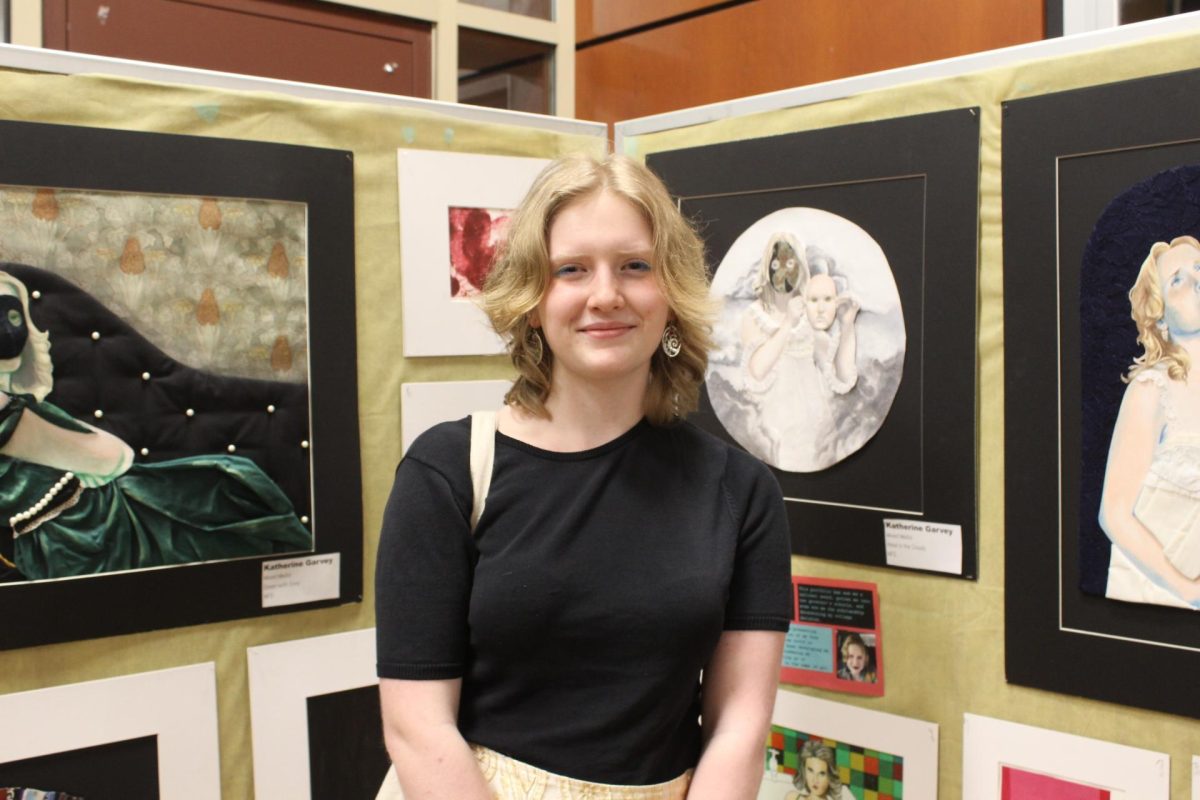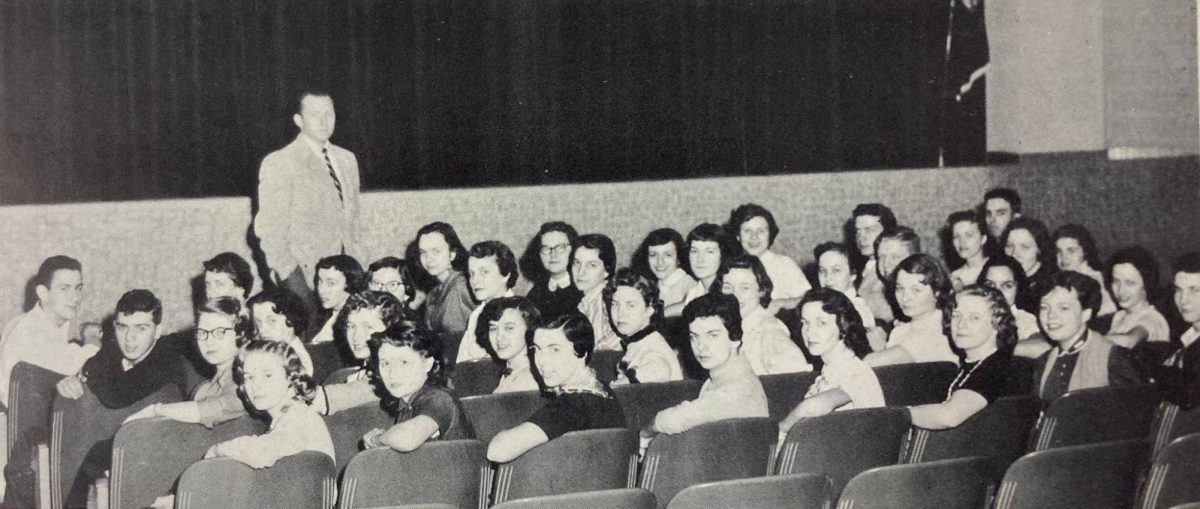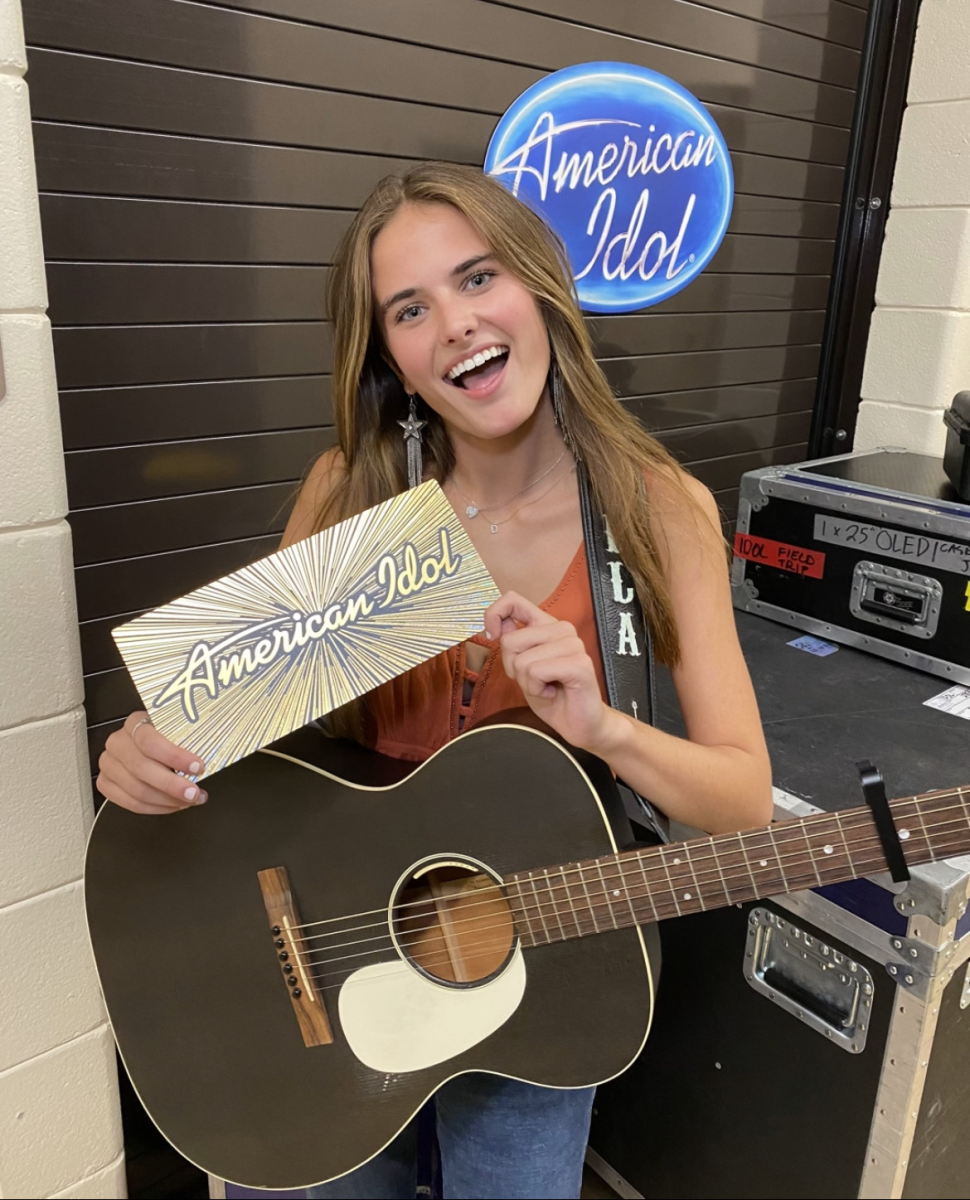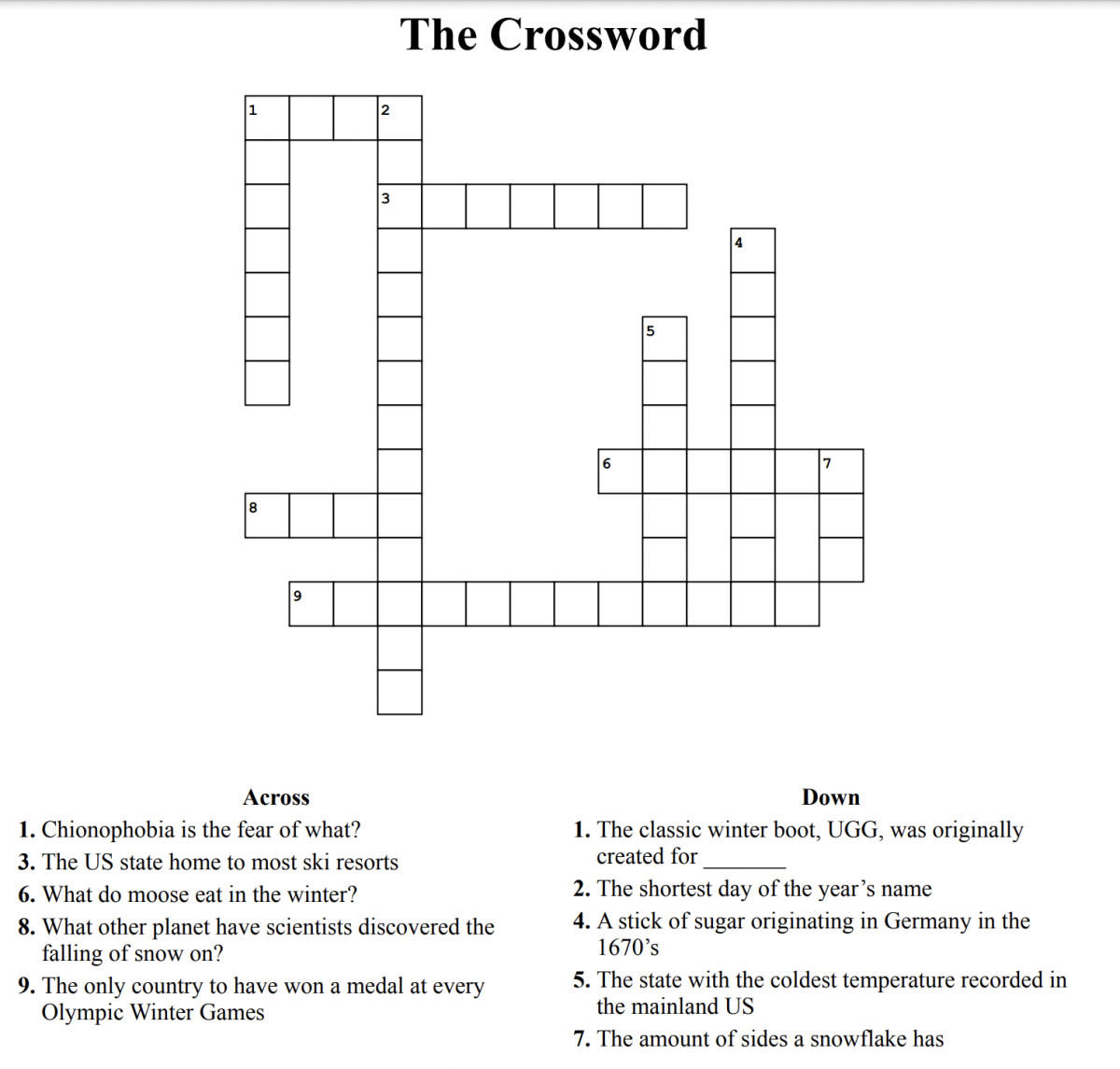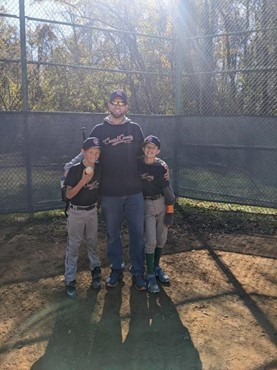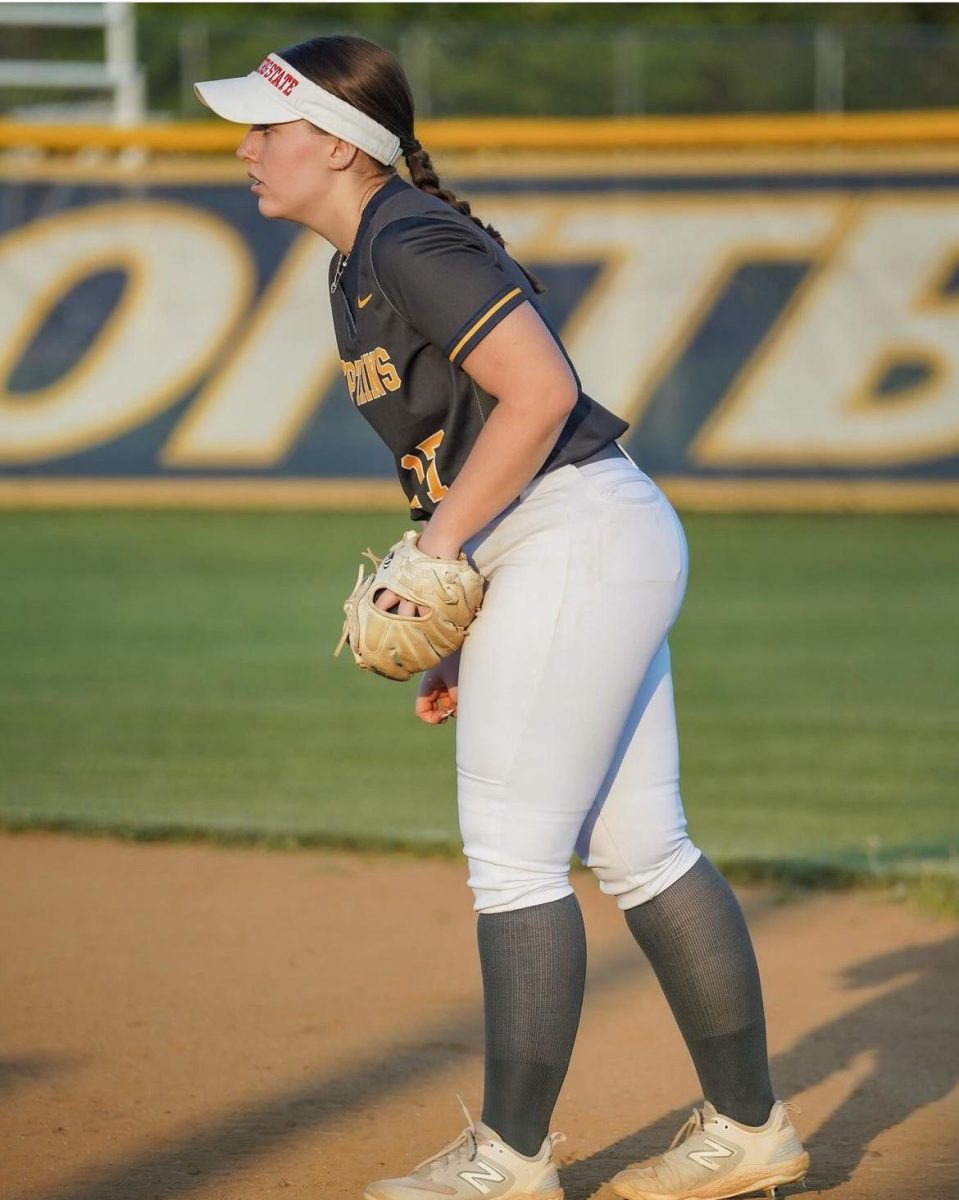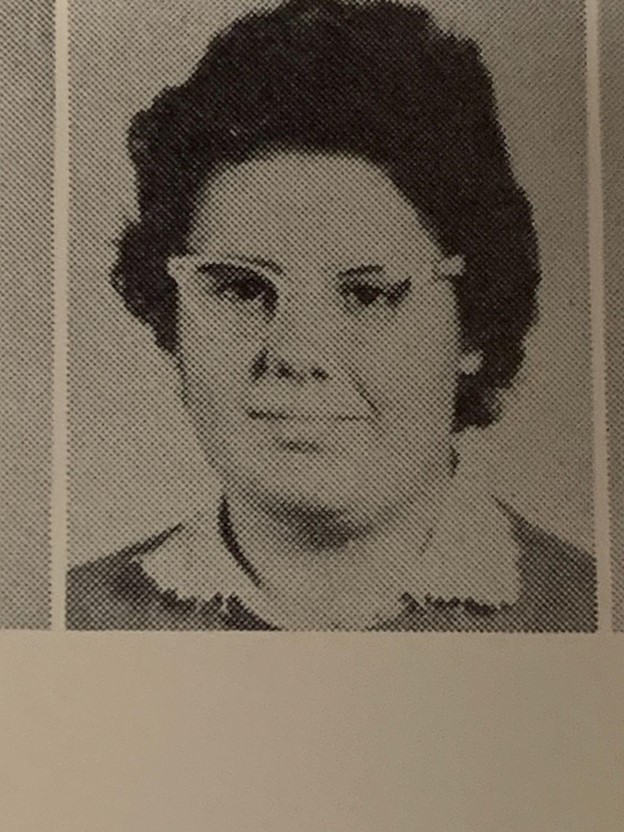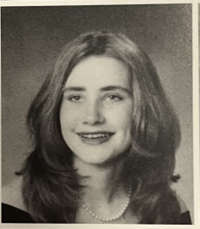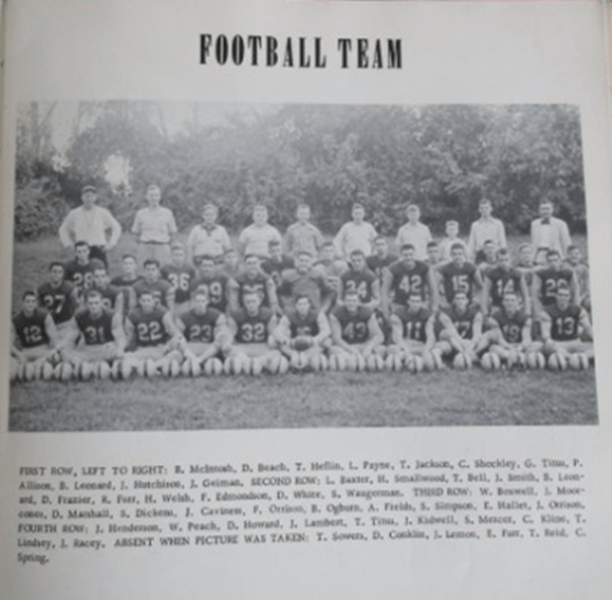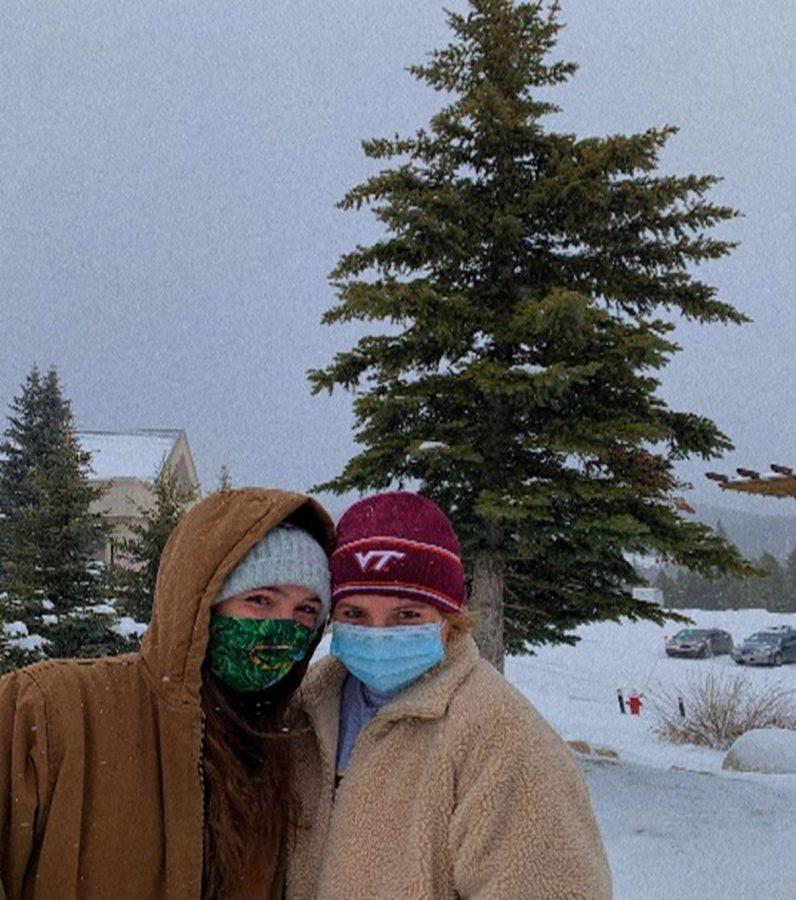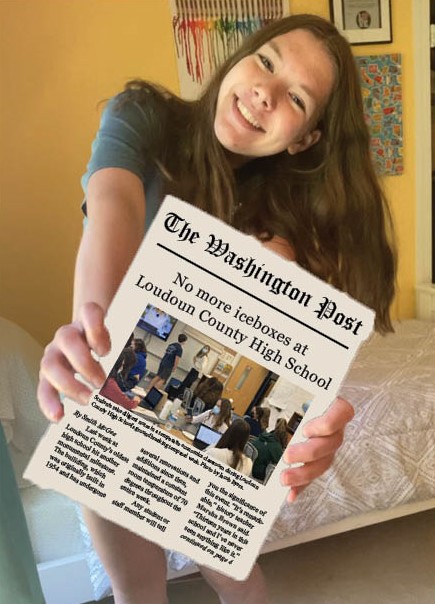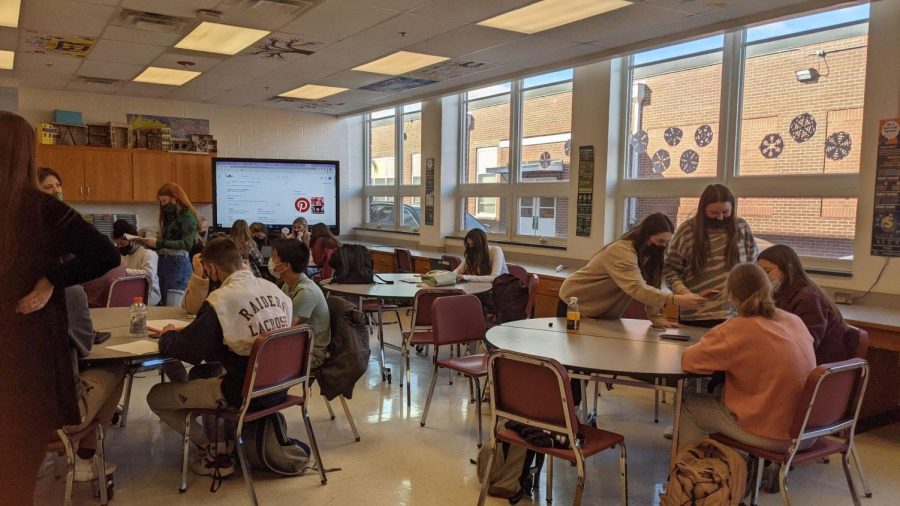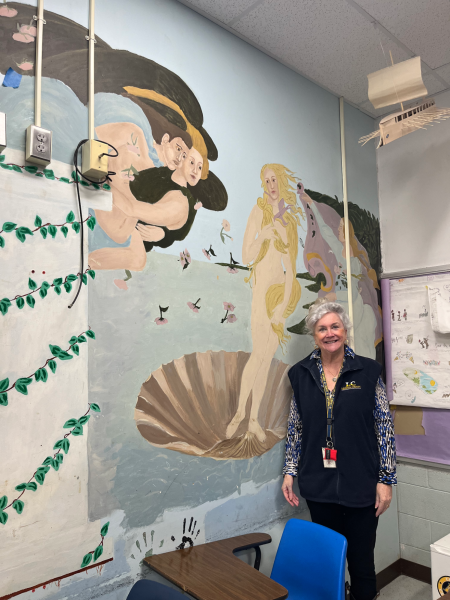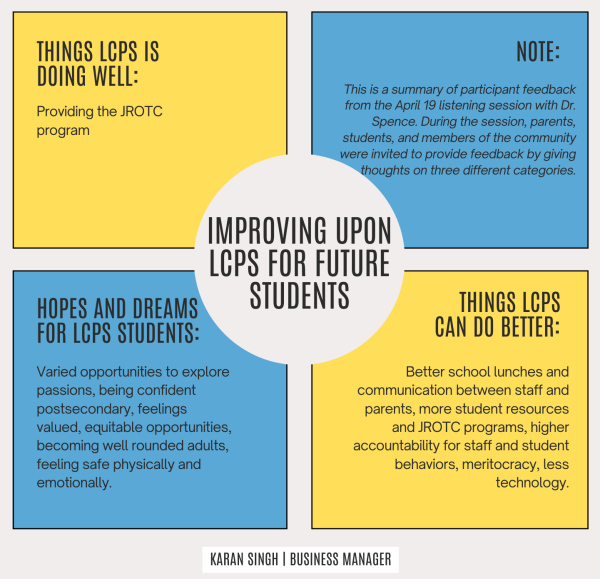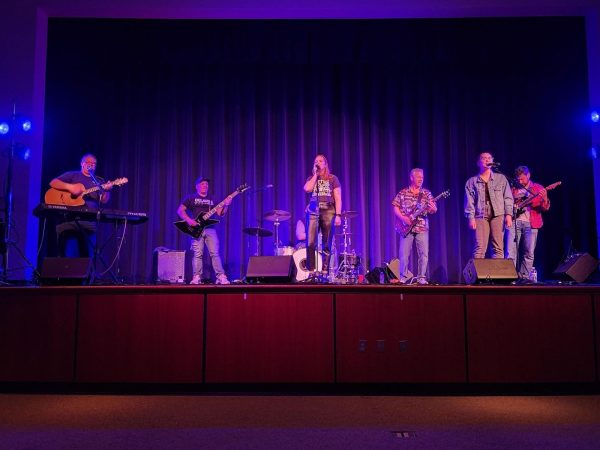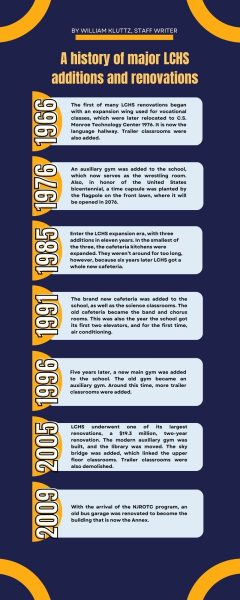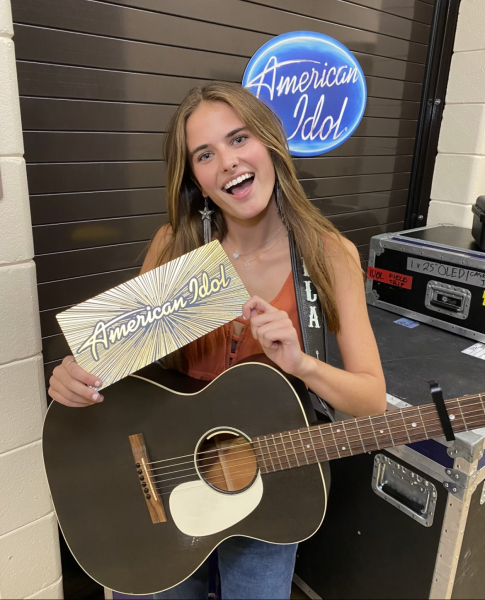PEER bring unity, mental health access, to school community
Students in PEER class collaborate in small groups, brainstorming, discussing current events, and planning how to execute plans for their next events. Dorene Kuebler, teacher of PEER stands in the left corner of the picture, helping to guide the students in what would topic would be best to educate on.
Cold winter air filters into the building as a crowd of students line up to make their way onto a small patch of grass nestled between two walls of the school, pulling their coats more tightly around them as they leave the warmth of inside. While usually these high school students would be basking in the warmth of the cafeteria on this frigid winter day, PEER, in an attempt to promote World Kindness Day obtained therapy dogs from Healing Hounds and allowed students to interact with them during their lunch block, bringing smiles to everyone’s faces as they chatted amicably while standing around the 3 dogs.
This is just one of the many events that PEER puts on, providing the school community with positivity and unity, but the story of PEER dates back far longer than one random winter afternoon.
PEER, or Positive Experiences in Educational Relationships, a program designed to utilize the connection between “peers” to provide a support system to students in need, was first introduced to Loudoun County in the school year of 1997-98. In modern times PEER has developed into the popular and active program it is today, with robust chapters in every Loudoun County public high school.
The goals of PEER are essentially to provide a safe environment, foster an accepting school community, and offer peer and adult role models for students. Over the years, as individual participants in the program began to advertise it through word of mouth, posters, and eventually social media, its popularity has grown.
According to Student Support Services Coordinator, Alisa Daniels, “The PEER program evolved from other peer-to-peer models which showed the effectiveness of support from a peer [who] has had similar experiences as the person needing support.”
After its administrative development, the Office of Student Support Services offered a handful of high schools the opportunity to pilot the program. Catching on quickly, PEER was eventually adopted by every high school.
Once introduced in the high schools, counselors, social workers, teachers, and students worked together to implement PEER most effectively, with participating students and sponsor teachers being provided with training in “helping skills,” as described by Daniels.
The PEER program grew naturally.
“Participation has grown over time, with the initial students creating posters designed to attract other student applicants for the following school year,” wrote Daniels. She added that with PEER initiatives growing school-wide, many PEER members are recognized as student leaders, drawing more publicity to the program.
In LCHS, the two main PEER staff leaders are Keri Hendershot-Waymire, school social worker, and Dorene Kuebler, Family & Consumer Science teacher.
One of their jobs is to assist in the planning and advertising of the monthly initiatives that PEER completes.
This school year, each month PEER is promoting a different campaign to provide information on something related to the health and safety of students.
Naming a few of the more prominent initiatives, Kuebler said, “We start with suicide awarness, then anti-bullying, world kindness day is in November, December has Special Ed day, special dating violence awareness day in February, we always do because of Valentines’ Day.”
For each initiative there is the general advertisement which, according to the information, is disseminated in several ways other than simple morning announcements.
“Sometimes it will be through some bulletin boards that we have in a cafeteria, we do social media campaigns around it and then we always try to do something interactive with the student body to bring awareness to those things,” Hendershot-Waymire said.
While PEER has school wide events and extensively advertised activities, they also do smaller things without overly publicizing them, for example leaving sticky notes on desks for world kindness day.
“Some of the things that we do are smaller, like people don’t even know that it’s necessarily PEER,” Kuebler said.
PEER also collaborates with the special education classes for special events such as dance parties, cooking, and crafts.
As another facet of its work, PEER combines with the ELL class to do activities such as scavenger hunts in an attempt to as Kuebler said, “try to make them feel like a little bit more part of the school.”
PEER also works one on one with students who are in need of friendship or guidance in “PEER Partnerships.”
“We meet with students who might just want to talk, who are either in between friend groups or are new to the school or they’re just struggling in some way and they’d rather just talk to another student than their counselor,” Kuebler said. “We’ll just try to sit with them at lunch or invite them to come to open lunch, and just make the transition a little easier.”
PEER is also behind “Lunch on the Lawn” and Wellness Wednesday, both of which are to help with creating a positive school community and helping students’ mental health.
The foundation to PEER, however, is not only the staff, but the students who do most of the interpersonal work.
In fact, according to Hendershot-Waymire, PEER initiatives are primarily student-led.
“We are there to support them, like, give them information but it’s not gonna work out if it’s not something they’re passionate about,” Hendershot-Waymire said. “We do give them the ideas: like ‘hey here’s some things that we have to cover’, but it’s things that they’re usually already tapped into and aware of, and they might just need a little bit of support.”
Senior Caris German joined PEER last year when the program was virtual.
German, inquiring on what the class entailed, after her counselor recommended it to fill an open block she had, said her school counselor responded with “It’s basically a class that teaches leadership and how to meet new people and builds the school community.” Continuing that German’s outgoing and sociable personality would be perfect for PEER member’s role.
To join PEER one generally has to be a Junior or Senior, although sometimes Sophomores are accepted.
“Generally we like Juniors and Seniors just because they’ve been through some stuff and they kind of have the tools to deal and the experience to deal with some of the things that the younger kids are coming in with,” Kuebler said.
Beyond their age, students have to submit an application, get two teacher recommendations, and go through an interview to have a chance at being accepted into PEER.
This process, according to Hendershot-Waymire, along with determining students’ acceptability for the program, also tends to winnow out students who are not “really interested in wanting that level of involvement.”
After joining PEER, student members spend their first quarter learning about how to properly conduct their job.
PEER students are educated in topics like communication and listening, and in ideas such as assertiveness, empathy, and creating boundaries.
They are also taught not to give advice to students they talk with, one of the reasons proper listening is so focused on in first quarter instruction.
“PEERS don’t give advice, we only listen,” Kuebler said. “It’s really important to not give advice because you don’t know a person’s whole circumstance and you could be leading them into something that could be the wrong thing for them, so we really just try to help them think through the problem and then to make their own decisions about where to go from there, so listening is huge.”
On top of communication skills PEER members are taught about different emotional health disorders or what certain learning disabilities can look like or how they might be perceived by other students.
“Say if someone has a processing disorder and if you ask them a question, don’t keep asking them a lot of questions because they might still be thinking about how to respond to the initial question,” Hendershot-Waymire said. “It’s just sometimes that comfort with going a little slower, taking more time, being really thoughtful about the questions they’re asking but also, you know, not overwhelming the students that they’re being matched up with.”
German also experienced becoming less narrow minded about the people around her.
“It’s being more open-minded and I’ve learned you never know what someone’s going through outside,” German said. “I could look at someone and be like: It looks like they’re happy but they have something seriously going on in their lives and you would just never know.”
In class German enjoyed the lessons but felt she gained special experience from the practical application section, especially being able to participate in person for PEER this year.
“We get to do more in-class practice I would say, so we learn a lesson and then are paired with another student and practice what we have just learned about,” German said. “Virtually we did that too in breakout rooms but I feel like it wasn’t as effective because when you’re in person, you can read someone’s body language and how they are looking.”
When PEER isn’t teaching its members about how to interact with others, the students are usually planning upcoming activities.
“It’s such a chill but hard-working place,” German said. “There’s no stress about it. You go to class, you learn, you interact and you can just leave. We do get so much done, which is kind of mind blowing because you feel like you walk out so relaxed but we just planned a whole month of events.”
PEER members are required to sign a confidentiality agreement, so as not to share the information spoken about in their meeting with other students. In more serious situations, such as cases of harm being caused towards oneself or others, PEER students are told to bring the information learned to a PEER advisor or counselor.
Fortunately, German believes that after COVID-19 our school has grown closer and mental struggles have become less stigmatized.
“I wouldn’t say it’s looked down upon, I think it’s actually more normal now. Especially since COVID, everyone went through something, being locked in their house, not being able to see anyone, that definitely I think brought a lot of like mental problems to people, but now people are way more understanding and accepting about it,” German said. “I don’t think it’s ever embarrassing to talk about because I think there are so many people now that can relate to a similar situation that others have gone through.”
German later continued, “I think in the beginning of the year, especially, people were looking for any sort of interaction. Maybe for the first few days people were like, oh my gosh I don’t hang out with them, I want to stay in my little circle, but now I feel like we’re back in school and people want to hang out with everyone, because we were off for 16 months and didn’t have any interaction so now everyone wants to interact with everyone and meet new people.”
Beyond helping others there is also a focus in the PEER program towards PEER students dealing with their own mental health.
“They’ll be working through their own stuff at the time,” Kuebler said. “If they’re working through something of their own we won’t match them with somebody because we want them to take care, you have to be healthy inside before you can help others. Some of the people that we have in PEER have actually been through quite a so they have already come through and they have those tools to kind of help the other people like: hey, you know, I had a similar situation and I’m here and I’m good and it just takes time.”
It is, in fact, not uncommon for students to join PEER specifically because they have had past negative experiences.
“Some people want to join people because they have had a hard time and they’re like: I just know that this is a really good program because I went through this and I want to help other people not have to go through it,” Kuebler said.
If not themselves it is often someone they know or have known that motivated them to join the program.
“Whether it be a friend or a family member, they’ve had some life experiences that have exposed them to sort of the need or the idea of wanting to get involved and to help in those ways,” Hendershot-Waymire said.
German, for one, feels as though her mental health has been positively impacted by joining PEER, in an unique way.
“Knowing about other people’s issues, it makes me forget about myself and really gravitate towards someone else because hearing about someone else’s story,” German said. “It really grabs your attention and you want to give them your full focus if it’s a real problem. It kind of makes me forget, but it also helps me relate to them personally; no, I know I’m not alone.”
On that note German has had an overall positive experience in PEER, enough for her to recommend it to any other student.
“Definitely join it,” German said. “You will learn so many life skills and it’s so fun, to plan school events and to get to help people and that’s really cool, and you also get to hang out and enjoy and practice all these skills in class, and this is real life stuff that you will use from the rest of your life. It’s really rewarding to know that someone can say one thing and could change someone’s perspective and outlook, and really help them through something.”
In fact, the only thing German wishes she could change about the program is to increase its popularity.
“The only wish I have is that I wish more people knew about it,” German said, elaborating people knew about the big programs PEER puts on like ‘lunch on the lawn’ but not the actual ideas behind them. “I wish our message and what we’re trying to do was portrayed more,” German said.
And, to students that want to reach out to PEER for any help, German embodies PEER’s spirit.
“Of course, the more the merrier and it doesn’t matter what time of the day. I will always be there for someone. If they want to come have lunch, that’s totally cool with me, I love to meet new people,” German said. “I am very social. I would obviously say yes to anyone who wanted to.”
